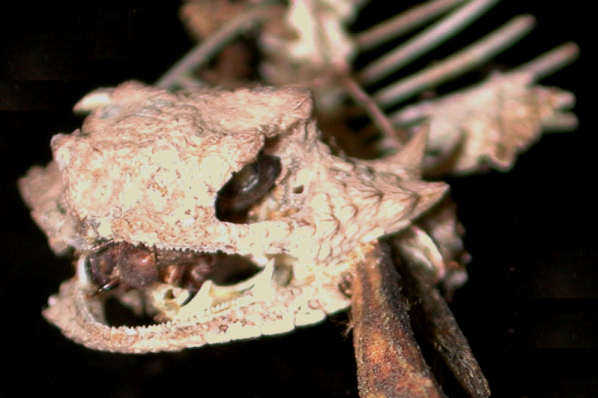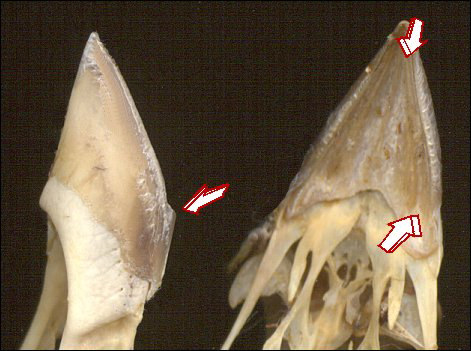
The order Passeriformes (perching birds) is a huge order with more than half of all living birds belonging to it. There are about 5400 species. As with the world in general, the Chihuahuan Desert avifauna includes large numbers of passeriformes. Only a few of the families can be considered here. A good handbook of birds is recommended for pictures and distribution. Examples are Sibley, 2000; Peterson and Chalif, 1973).
The Tyrannidae, or tyrant flycatchers, includes many desert inhabitants; the El Paso area has recorded 22 species, though some are rare stragglers. Flycatchers are insectivorous birds, but rather than spending large amounts of times swooping through the skies, they generally perch in likely areas until prey is sighted. It that point, they take to wing and chase down the prey; as with the goatsuckers, rictal bristles help guide prey items into the mouth.
The Laniidae is represented in the desert region primarily by the Loggerhead Shrike. This handsome bird is mentioned here largely because of one of its habits: that of impaling its prey on thorns, barbed wire, or other sharp objects, presumably for later use. Moderate-sized to large invertebrates, lizards, mammals, and birds may be treated in this manner.

Remnants of a horned lizard impaled upon a yucca leaf (lower right) by a Loggerhead Shrike. Photograph by A.H. Harris from a specimen collected by Willian Reid.
Swallows, members of the Hirudinidae, insectivorous, and like swifts and goatsuckers, spend most of their time in the air while feeding.
The Corvidae is one of the most recognized group of birds by laypeople. The family includes crows, ravens, jays, and magpies. Ravens and several species of jays are common desert dwellers. The Chihuahuan Raven is common throughout the region, with jays commoner in brushy and woodland habitats. Members of the family are considered to be among the most intelligent of the birds.
Wrens, order Troglodytidae, are common birds throughout the desert; eight species have been recorded around El Paso, for example. The Cactus Wren perhaps is most widely known because of its large size (for a wren) and its nest, a rough sphere with a side entrance.
The Mimidae includes mockingbirds and thrashers, both of which are represented in the desert avifauna, with the thrashers having several species. The family name presumably reflects the frequently demonstrated ability to mimic other birds and even non-bird sounds; the Northern Mockingbird is a master of this.
Most of the sparrows fall into the family Emberizidae, and a large number occur in the Chihuahuan Desert (32 species have been recorded from the El Paso area, for instance). These birds are specialized as seed eaters. Most are relatively small and many relatively uncolorful.
Blackbirds, Icteridae, aren't necessarily black (the meadowlarks and orioles are blackbirds, for example), but many are or have considerable portions of their plumage blackish. Grackles, Red-winged Blackbirds, Yellow-headed Blackbirds, and several species of orioles, among others, belong to this family. Many are associated with marshy areas, but others are not.
Fringillids (Fringillidae) include the goldfinches, Evening Grosbeak, and the familiar House Finch, along with others. The emberizids have often been put into the Fringillidae in the older literature; like emberizids, these are seed eaters.

Many seed eaters have a specialized set of structures to aid in shedding the seed coats of seeds and thus allowing them to get at the otherwise protected kernel. The seed fits into the groove in the palate (marked by the arrows at the ends) and rolled against the "blade" (marked by the arrow) of the lower jaw, splitting the seed coat. The tongue then separates and discards the seed coat.
Passeridae: House Sparrow. This introduced species (long known as the English Sparrow) has spread widely throughout much of North America, but almost always in association with human habitation. In this, it is similar to another introduction, the Starling (family Sturnidae), though the House Sparrow has been more successful in the arid regions of North America.
Last Update: 27 Jun 2006